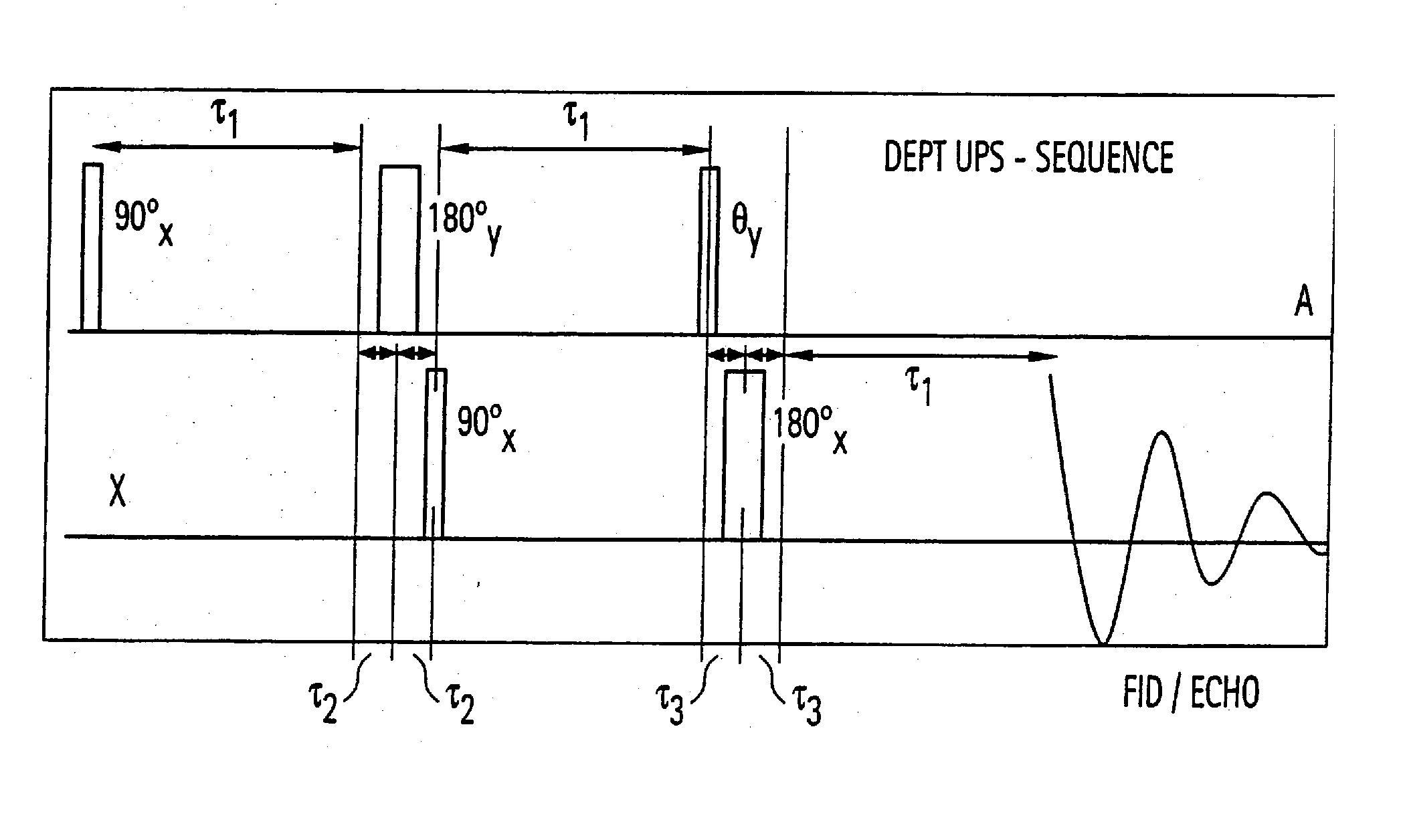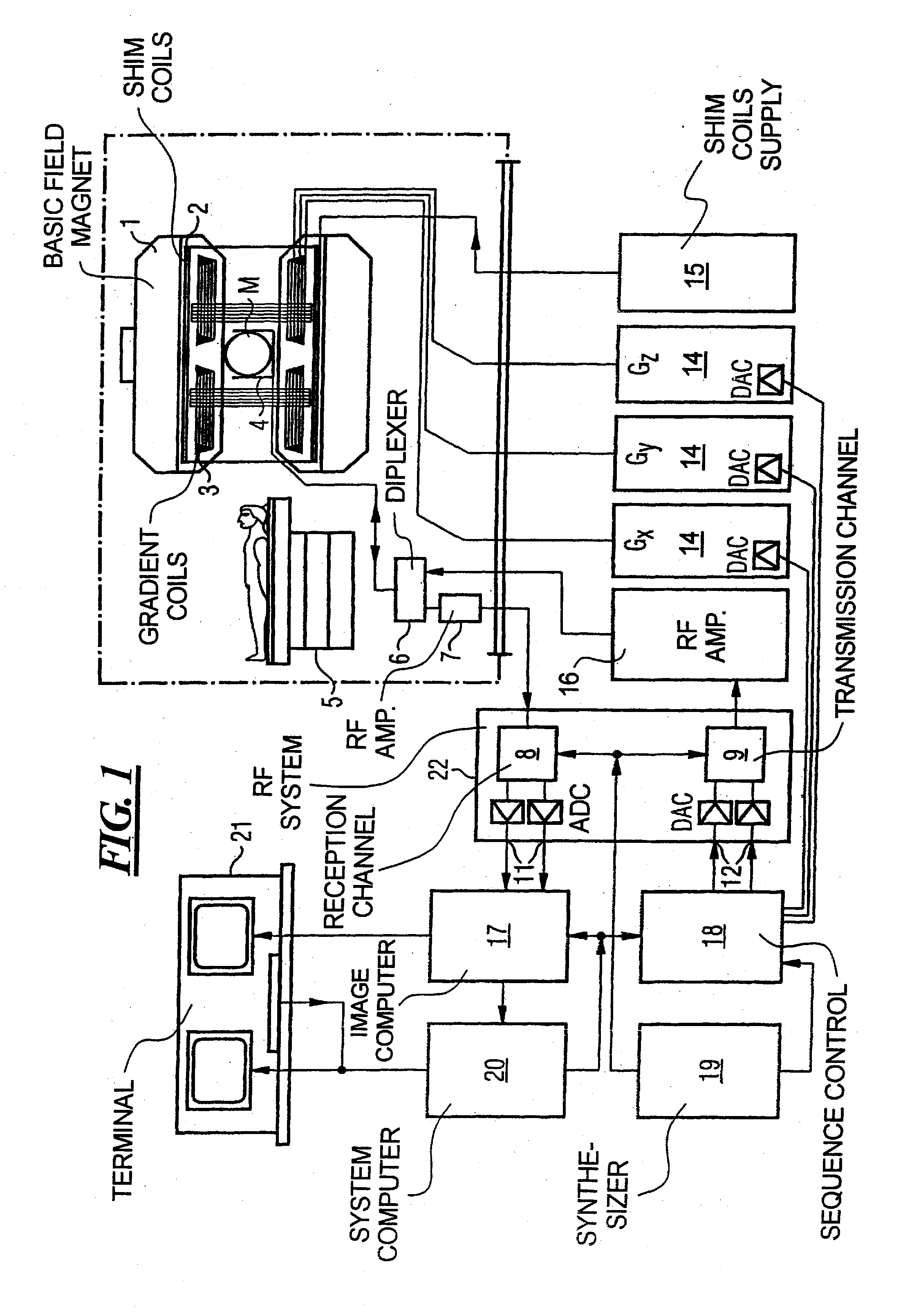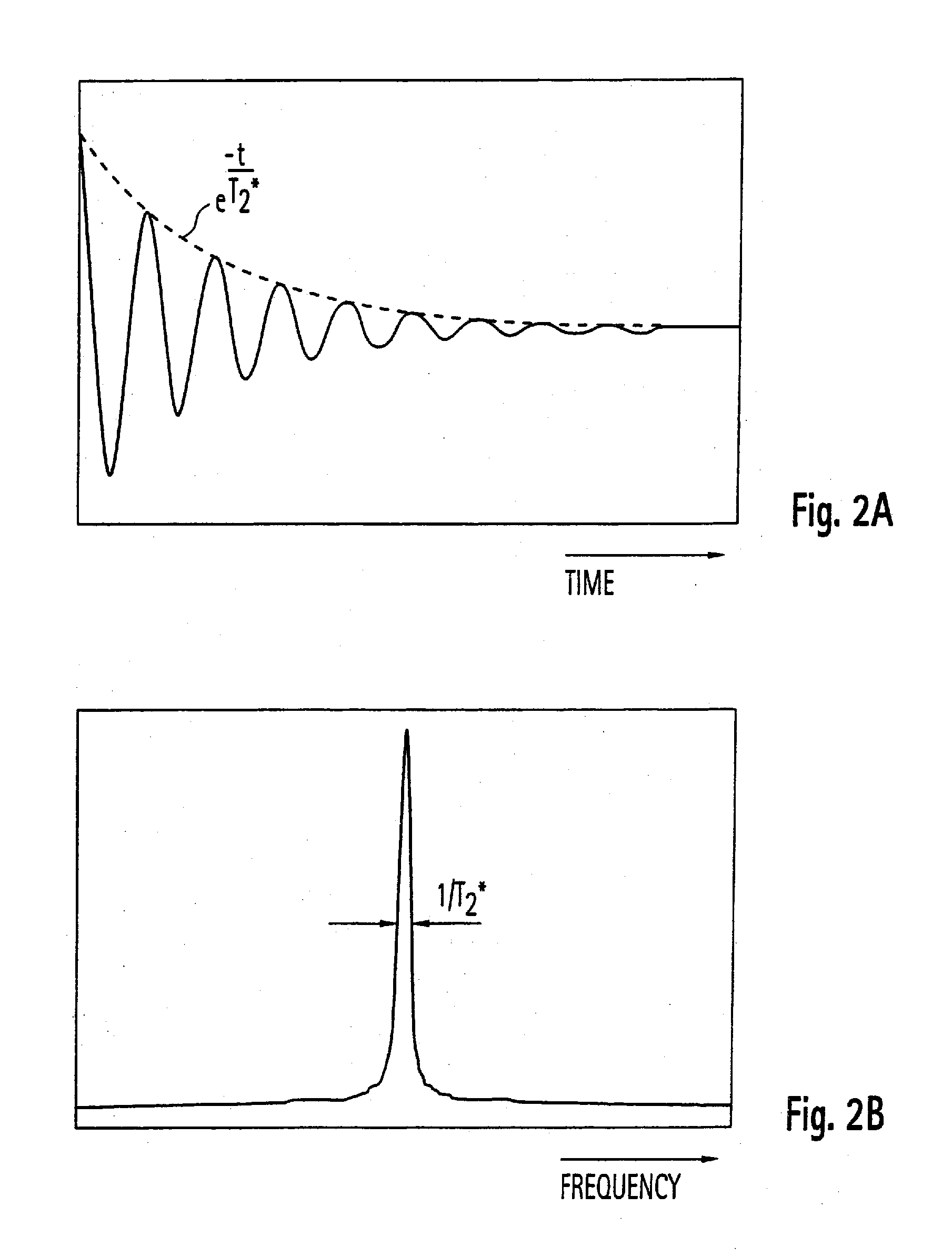Method and apparatus for polarization transfer in the detection enhancement of mr spectroscopy
a polarization transfer and enhancement technology, applied in the field of magnetic resonance (mr) spectroscopy, can solve the problem of not being able to execute nmr experiments with polarization transfer
- Summary
- Abstract
- Description
- Claims
- Application Information
AI Technical Summary
Benefits of technology
Problems solved by technology
Method used
Image
Examples
Embodiment Construction
[0098] The methods of the clinical MR-spectroscopy primarily differ from those of the conventional MR-imaging only in that in addition to the spatial resolution, the chemical shift, i.e. the hyperfine structure, is to be resolved as well. This can be realized by conventional magnetic resonance imaging apparatuses, which is why these are preferably used in the clinical MR-spectroscopy and the method according to the present invention—modification of NMR-experiments, which use polarization transfer for detection enhancement of insensitive nuclei—is to be primarily implemented on such apparatuses.
[0099] It is to be noted, however, that the method according to the present invention can also be applied to high-field-in-vivo-MR-systems (momentarily up to 7 Tesla for human applications and 17 Tesla for other applications), which are isolatedly developed in isolation and used, as well as to high resolution NMR-spectrometers.
[0100]FIG. 1 shows a schematic illustration of a magnetic resonan...
PUM
 Login to View More
Login to View More Abstract
Description
Claims
Application Information
 Login to View More
Login to View More - R&D
- Intellectual Property
- Life Sciences
- Materials
- Tech Scout
- Unparalleled Data Quality
- Higher Quality Content
- 60% Fewer Hallucinations
Browse by: Latest US Patents, China's latest patents, Technical Efficacy Thesaurus, Application Domain, Technology Topic, Popular Technical Reports.
© 2025 PatSnap. All rights reserved.Legal|Privacy policy|Modern Slavery Act Transparency Statement|Sitemap|About US| Contact US: help@patsnap.com



